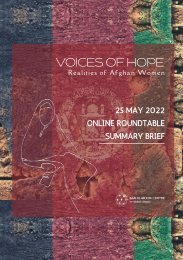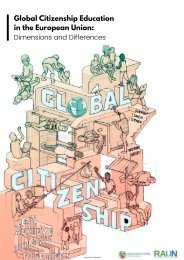Europe and North America Regional GCED Network
The report “Europe and North America Regional GCED Network” is based on a research project funded by Asia-Pacific Centre of Education for International Understanding (APCEIU) and Ban Ki-moon Centre for Global Citizens (BKMC) led by Lynette Shultz (Centre for Global Citizenship Education and Research, University of Alberta) and Massimiliano Tarozzi (International Research Centre on Global Citizenship Education, University of Bologna) as Principal Investigators. The research team was composed of Carrie Karsgaard and Carla Inguaggiato, with the support of Kester Muller and Francis Owusu.
The report “Europe and North America Regional GCED Network” is based on a research project funded by Asia-Pacific Centre of Education for International Understanding (APCEIU) and Ban Ki-moon Centre for Global Citizens (BKMC) led by Lynette Shultz (Centre for Global Citizenship Education and Research, University of Alberta) and Massimiliano Tarozzi (International Research Centre on Global Citizenship Education, University of Bologna) as Principal Investigators. The research team was composed of Carrie Karsgaard and Carla Inguaggiato, with the support of Kester Muller and Francis Owusu.
Create successful ePaper yourself
Turn your PDF publications into a flip-book with our unique Google optimized e-Paper software.
the phenomenon we aim to describe. This property is called multiplexity, <strong>and</strong> it refers<br />
to the fact that relationships are not generic or of only one type (Robins, 2015).<br />
A key theoretical foundation for the study of relations among actors is that<br />
of social influence/diffusion, which describes the phenomenon where actors<br />
change certain attributes (opinions, behaviors) to accord with those of their<br />
partners. Certain characteristics of a node (e.g., disease, innovation) may<br />
therefore diffuse through the network. However, network structural properties at<br />
the global <strong>and</strong> local levels impact the ease or difficulty of social influence <strong>and</strong><br />
diffusion. For this reason, it is crucial to investigate several socio-metrics such<br />
as clustering, core-periphery, small world, brokerage, reciprocity, closure, <strong>and</strong><br />
centrality measures, as articulated in more detail in Chapter 3. These measures<br />
allow identification of the difficulties <strong>and</strong> strengths of the network in favoring the<br />
diffusion of information <strong>and</strong> knowledge.<br />
In this study, these structural properties of the networks are analyzed to<br />
underst<strong>and</strong> the role of the regional network of <strong>GCED</strong> providers in the EU <strong>and</strong><br />
NA to assist in strengthening <strong>GCED</strong> efforts, as these structural properties<br />
impact information flow. For instance, reciprocity is the tendency of actors to<br />
reciprocate relationships when the tie is significant <strong>and</strong> stable. Closure refers<br />
to triangulation in networks or the propensity to operate in small groups. These<br />
properties relate to a theory in psychology called balance theory (Heider<br />
1958), which has become embedded into network theory (Davis 1967). For<br />
example, balance theory predicts that ties that are not reciprocated tend not<br />
to last. <strong>Network</strong> brokerage analyses the actors that bridge (broker) others that<br />
otherwise would not be connected.<br />
We looked at centrality measures of the actors in the network (in- <strong>and</strong> outdegree<br />
centrality) <strong>and</strong> the organizations' self-articulated roles to underst<strong>and</strong><br />
how actors involved in the implementation of <strong>GCED</strong> in EUNA cooperate.<br />
We also looked at whether actors tend to collaborate with others that<br />
share the same characteristics. This property is called homophily, <strong>and</strong><br />
it describes the propensity for actors with the same attribute to form ties<br />
(McPherson et al. 2001). In our study, we examine homophily based on<br />
organizational characteristics, as well as in relation to their respective <strong>GCED</strong><br />
conceptualizations <strong>and</strong> objectives.<br />
3.3. Typology of network design<br />
There are two main approaches to network design: whole <strong>and</strong> egocentric<br />
network studies. A whole network design requires the definition of a list of actors<br />
within a well-defined network boundary. The data includes the ties that are<br />
present among all actors within this boundary (Robins, 2015, p.36). By contrast,<br />
an egocentric network design is when selected informants are required to<br />
nominate alters to which they are connected. The limitation of this design is that<br />
it does not allow mapping the connections between the different ego networks.<br />
026ㆍ027


















